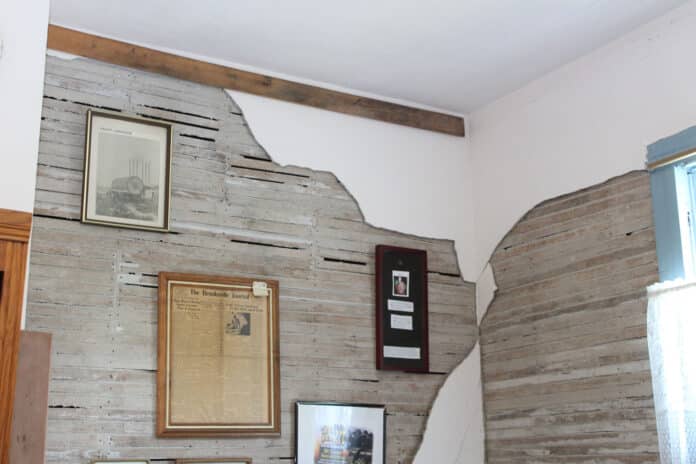Article and Photography by JULIE B. MAGLIO
Where East Jefferson Street takes a sharp left turn heading into downtown Brooksville, a stately home overlooks the vehicles that take the curve- some gingerly, others not so much and still others a little distracted by the appealing seven gabled home of Queen Anne architecture. It’s called the May-Stringer House, well known for its rumoured spectral inhabitants and the local treasures it keeps.
Dr. Creekmore’s roll top desk sits in Dr. Stringer’s office within the 14 room home. Dr. Creekmore began his practice in Brooksville in 1917- while his early predecessor Dr. Stringer was the local doctor in the late 1800’s.
Dr. Creekmore’s desk is on loan from Betty Cason Snow. Betty’s mother Vera Smith, worked for Dr. Creekmore for many years. Before her marriage in 1957, Betty recalls resting her arm on the surface that pulls out of the desk for a blood test.
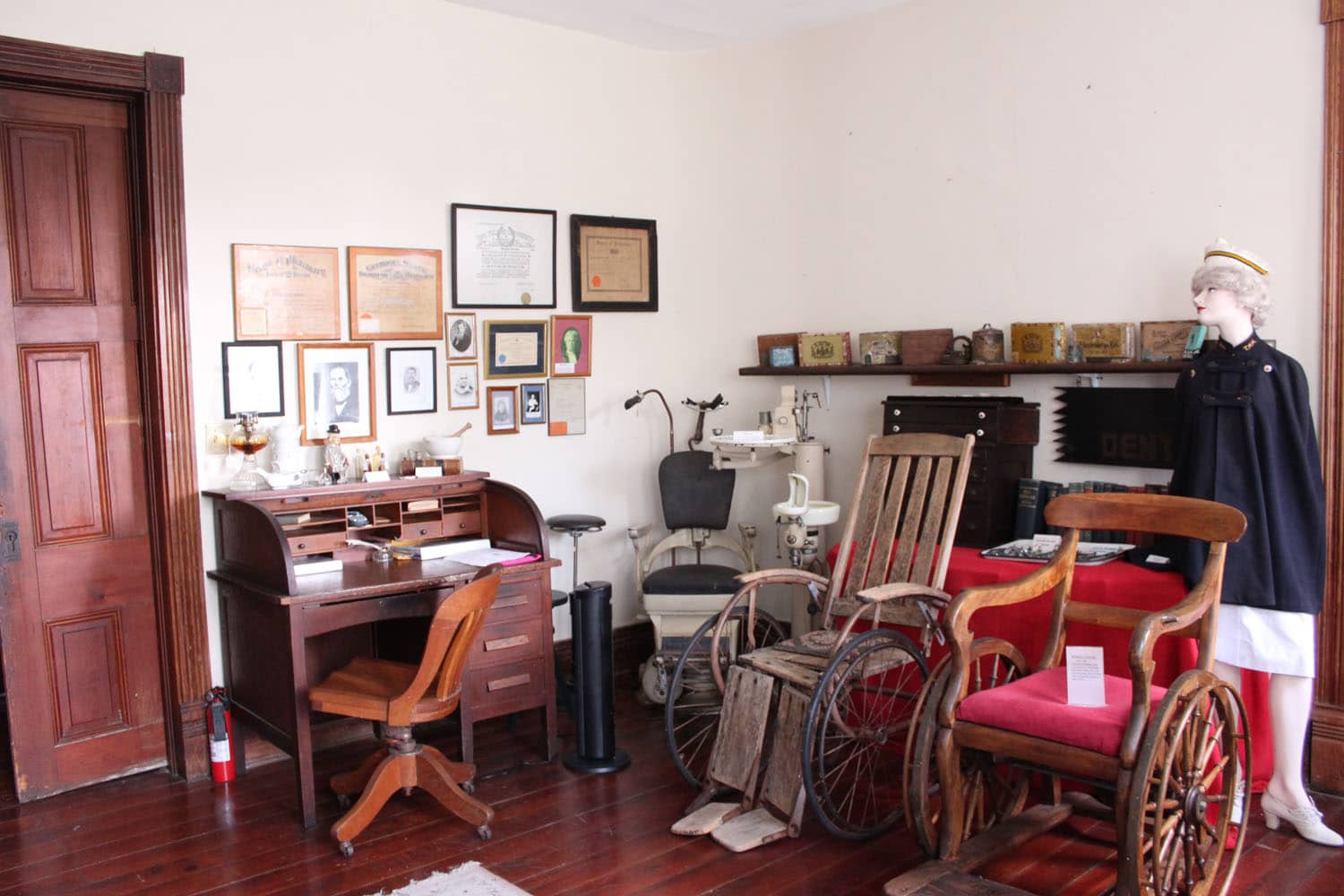
Betty remarked that she has no room in her house, that’s why she has it on loan to the May- Stringer House.
Betty’s husband, Bobby Snow, donated a Coats and Clark spool chest from the early 1900’s.
There are approximately 11,000 artifacts and heirlooms from local families that have been entrusted to the museum for safekeeping. There are so many, that not all of them can be on display at once and some must be stored in the home’s attic- said to have the most paranormal activity.
The items in the home are well cared for and lovingly displayed by the all volunteer staff. Curator Morgan Wick develops themed displays that alternate throughout the year.
Like many old homes, it’s full of history, heritage and yes- structural issues- some of them critical- all of them costly to fix.
“Not only are we running into problems underneath the house with the foundation, we’ve found termite damage- we have joists that are not matched up, just a lot of surprises. We knew there would be issues, but not to this extent,” said Wick.
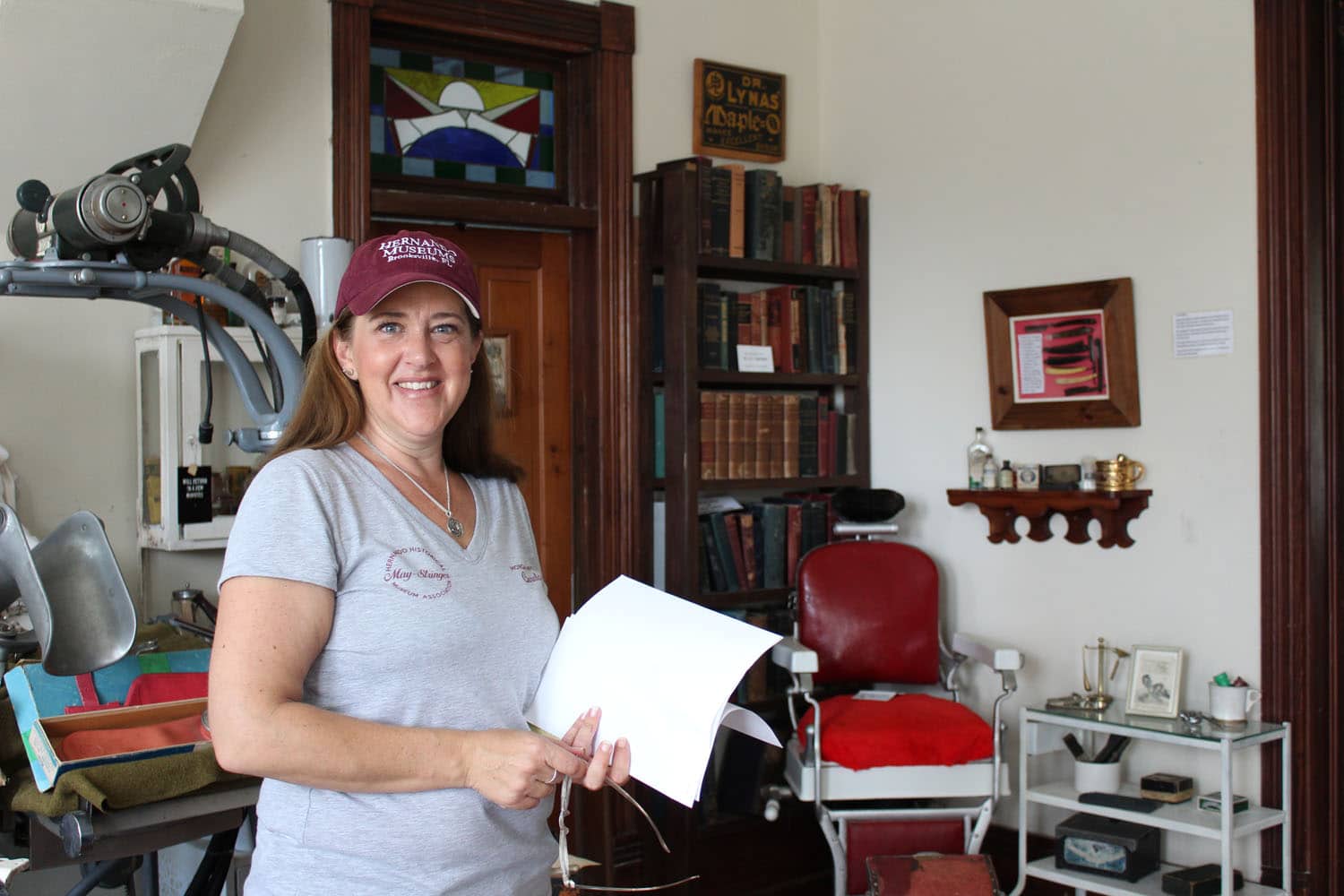
“When it’s all said and done we’re going to end up with over $100,000 in renovations,” she explained. The contractor, Cavalier Construction, Inc., experienced in historic restorations, is currently a quarter to halfway through the evaluation of the 63 brick piers that support the house. Wick says the majority of the piers are having to be replaced. While evaluating and replacing piers, they are finding damage to support beams and joists not attached to anything.
The stabilization process occuring underneath the house has some unintended consequences inside the home, such as plaster cracking and falling off the walls due to the jostling of the support structures.
Because their gift shop has been out of service for nearly a year due to the renovations, the museum’s revenues come solely from tours and events. The new gift shop is set to occupy the former military room, but there have been surprises during renovation- prolonging the process.
During a tour of the house, Wick explained, “We started to do some renovations in here to make this a functioning nice gift shop- stock it with local Brooksville artworks and goods; things that highlight Hernando and the surrounding area. When they started the stabilization and we asked them to look at the floor that was in here, we found a lot of mismatched joists- it was not a stable floor. In addition we had to have a whole new subfloor put in. We had water damage- now our gift shop is set back at least another few months.”
Without the gift shop- they are losing the opportunity to bring in revenue. “We’ve already been without it over a year. That’s a big hit for us. That’s for sure.”
Both the kitchen and to be gift shop are part of the 10 room, two story addition. The addition was constructed by Dr. Stringer after he purchased the home in 1903 for $2600, according to Virginia Jackson’s historical account of the home. Virginia Jackson was a historian and Director of the Hernando County Historical Society who passed away on July 12, 2014. The original house built by John L. May, a Brooksville contractor was a two room house with a loft.
The interior wall of the kitchen has large visible cracks in the plaster- the result of the stabilization process.

A steep narrow stairway is located between the kitchen and the original dining room. Wick noted that the stairway was originally on the exterior of the house as the home ended at the original dining room. May built the house with an exterior staircase to avoid paying higher taxes.
“He was only taxed for two rooms and a loft. If the staircase was interior, then it would have been a two room and two bedroom house- which would trigger a higher tax,” said Wick. She also explained that the back to back construction of the fireplaces was another way to reduce his tax burden as homeowners were taxed on the number of chimneys in the home.
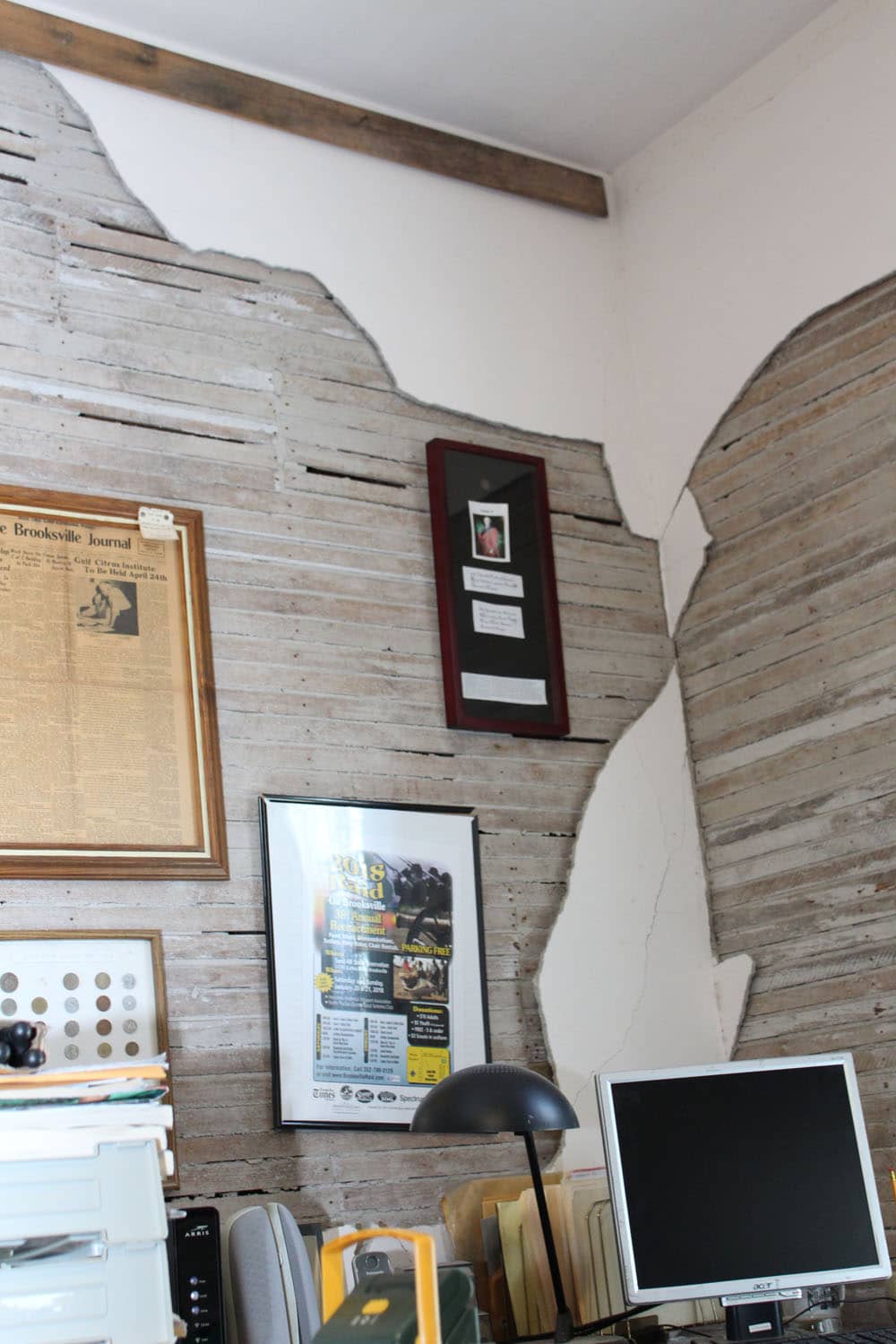
We make our way up the staircase and into her office where large portions of plaster had completely fallen off the wall, exposing the wooden lath beneath.
Wick explained that the corner post off of the kitchen supporting the northwest corner of the house was all rotted out and the beam beneath the house had sunk about 4 inches. They replaced the corner post, and raised everything up to the needed height. Fortunately nothing else in the house has had to be lifted, Wick remarked.
“We have dozens of volunteers- we spend our lives here. This is home,” she said.
Evidence of that is the pink plastic dollhouse on the floor in her office- not exactly of the home’s historic time period.
“My daughter’s barbie dolls are probably somewhere on the floor or on my desk. My kids are here nearly all the time- I practically live here it seems like. She has her dolls and everything tucked in every crevice.”
“The really scary part to me- we still have a fourth of the house to do. It’s just devastating- it really is,” she said gazing at the exposed wall.
Wick seems to take everything in stride. When there is a fix-it job she can handle, she says she’ll get it done. There was some water damage in the special exhibit room upstairs and Wick recalled, “I was in here ripping off paneling. Learning how to replace the boards.”
The collections in the special exhibit room are rotated quarterly.
“There are so many different groups in the community and we always find something that can appeal to everyone.”
We stopped in the Stringer Master Bedroom, where textiles are displayed. Wick says she is grateful to Janet Daniel, a textile expert who has been involved with the museum since the early 1980’s. Her husband Ron Daniel is a former President of the Board.
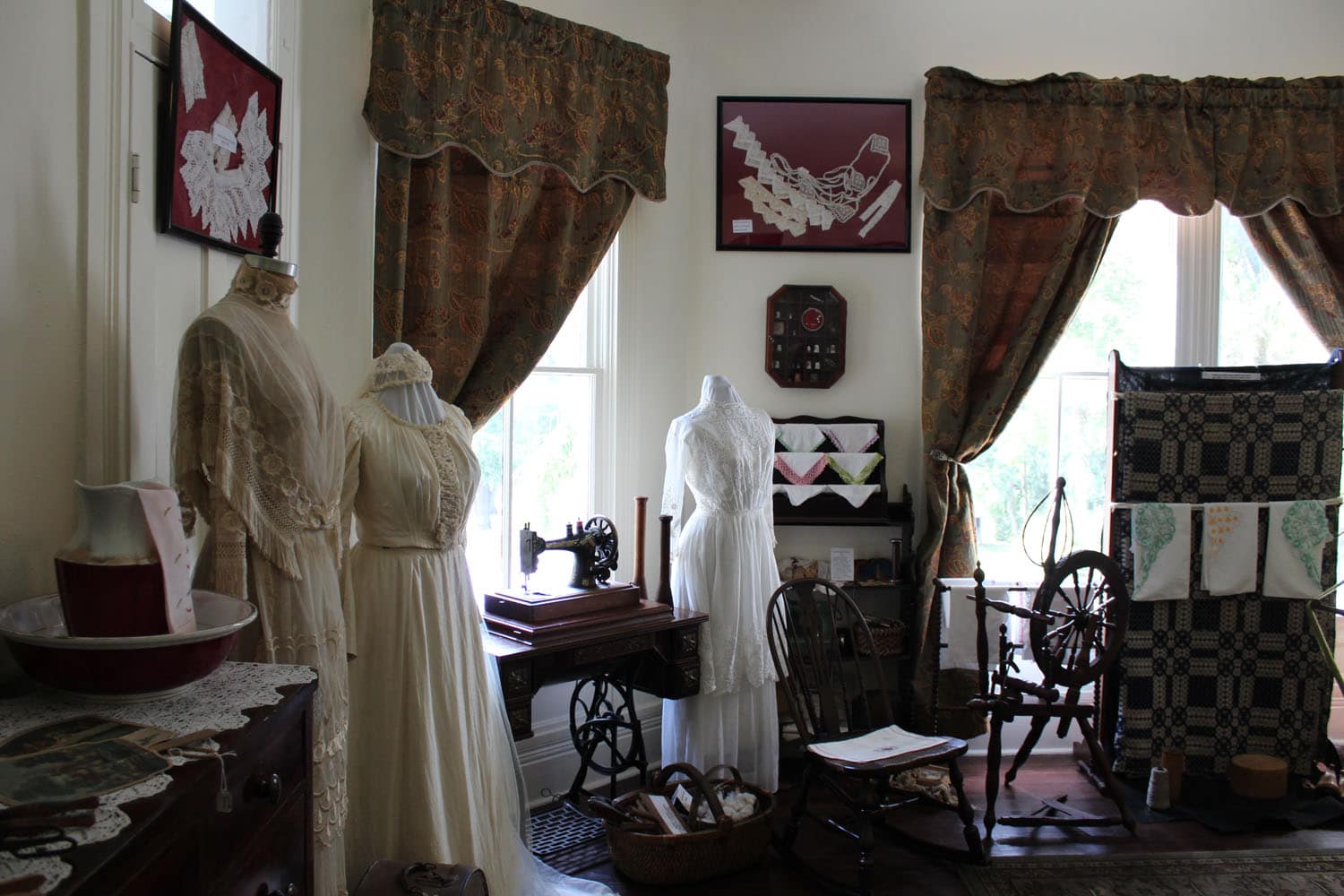
“In many cases, when we receive clothing artifacts- we get them and they are almost black. Janet is able to bring them all back to life. It’s just amazing to me the detail on clothes of that time period and the intricate work that the women did.”
“Most of the items you see throughout the house are original- there are only a handful of reproductions – which are noted,” Wick added.
She commented, “Our hope once the stabilization is done and we can get all of the plaster work repaired, we’ll just be going room by room to restore each one.”
In the Communications Room, across the hall from the Stringer Master Bedroom. Wick pointed out the original switchboard for the city of Brooksville which was in operation until 1978 when the technology became obsolete. It was retired to the Communications Room on the second floor of the May-Stringer House along with the old Hernando High School phone booth.
In Jesse May’s room, the children’s bedroom in the original house, the ceiling paint and wallpaper is peeling.
There was a considerable amount of water damage in the fourth floor turret- caused by a window that had no glass.
“Last year I was up there with spray foam trying to plug the walls. Just to get some of the water to stay out,” said Wick.
She said the roof has been evaluated and they did not see any major issues there fortunately.
Two dolls lie in a small cradle on the floor in Jesse May’s room.
“The doll on our left is one of our oldest artifacts and one of our most haunted artifacts,” Wick stated.
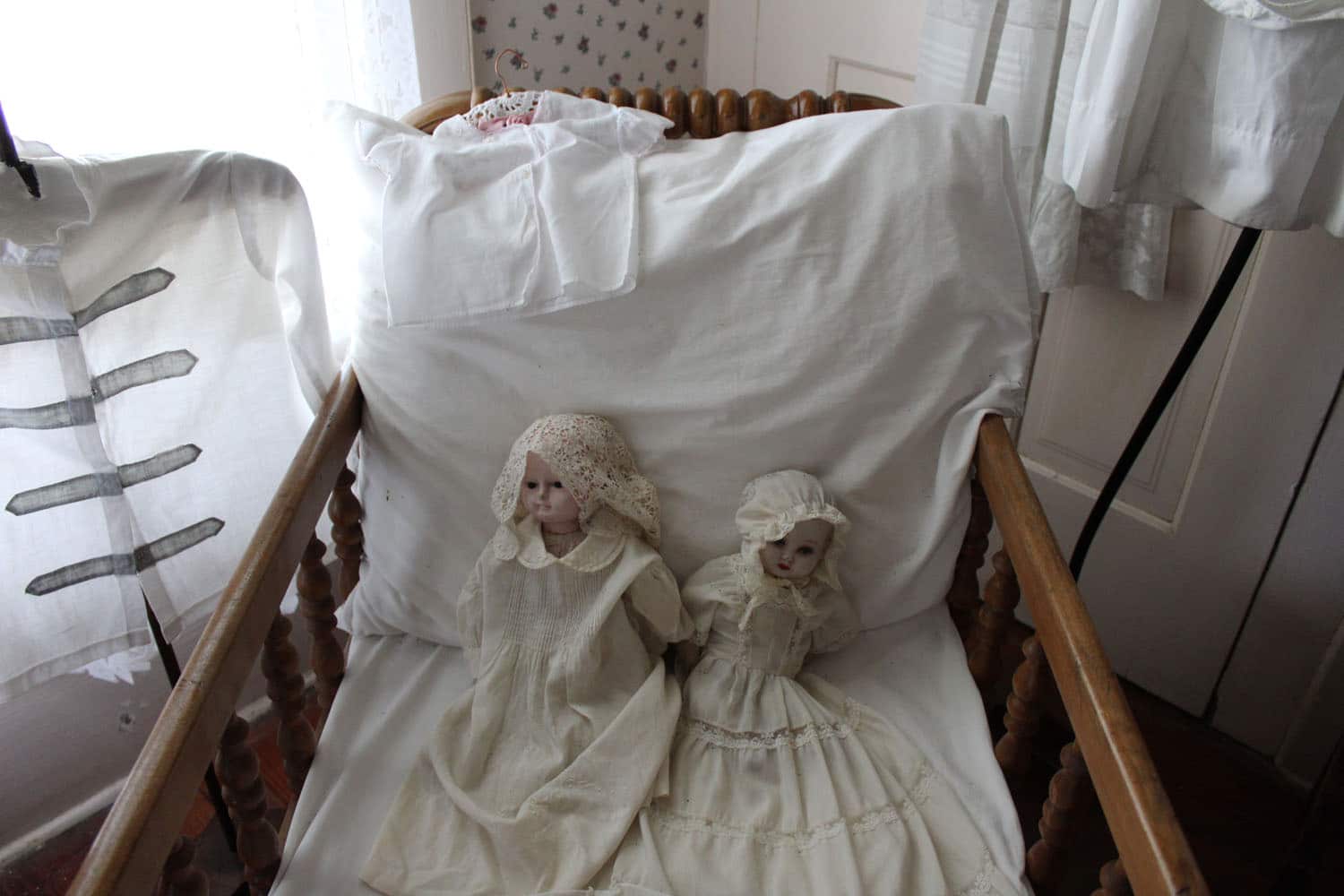
She continued, “I have yet to be here a day in a little over five years that I haven’t had something happen. Not one day – and I’m here by myself a lot too. You’ll hear full conversations, dinner parties- I’ve walked through the dining room and I smell pot roast. You can smell the potatoes, carrots, hear dishes clanging…”
We climbed yet another stairway to take a peek at the attic. Just outside the tiny doorway to the attic, there is a plexiglass window to see into the turret. This window would have been used for ventilation, explained Wick.
“Back in the 1800’s, before air conditioning, you’d open the hatch and all the windows and it would act like a vacuum and it would suck all the heat,” she remarked.
“In these old homes the walls are hollow and that was done for ventilation. So what happened is that when the water was coming in, it was going through the wall and dropping straight down below us.”
As a result there is peeling paint and wallpaper in the rooms below due to the water coming in through the turret.
Inside the attic, you can see the layers of original shaker shingles. Anything not currently on display downstairs is stored up here.
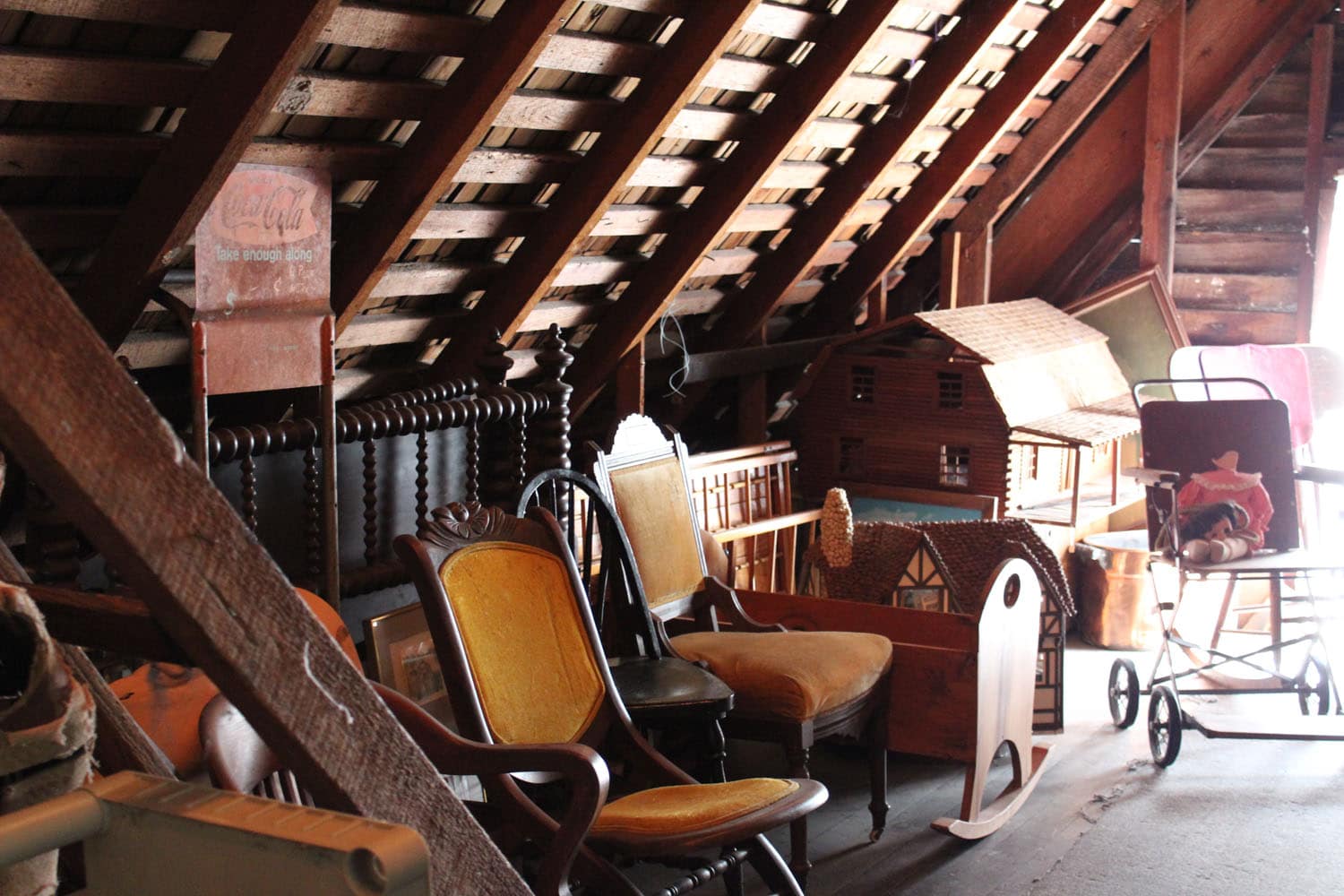
“We have been so blessed with donations and what I try to do because we can’t have them all out at once, I’ll switch the artifacts out and rotate them so visitors won’t see the same items every time they come,” she explained.
The attic is where the majority of the paranormal investigations take place and it does have an eerie feel, especially with the expressionless mannequins posed among the various relics of long ago.
Wick says she leaves the mannequins up here because she’s not too fond of them.
We depart the strange little room and Wick points out a small display of items that were unearthed on the property in 2016 using a metal detector. There’s the handle of a spoon, a key, bottle caps, a rusted nail and a coin among the items in the case. She says that they plan to create a large exhibit of all the items found beneath the house during the renovation process.
Back downstairs in Dr. Stringer’s office, Wick stated, “There’s a lot of really interesting Hernando history in this room.”
“We’ve got Dr. Coogler’s original book with all the births from the 1940’s.” She pointed out Dr. Creekmore’s roll-top desk, on loan from Betty Cason-Snow and the exam table from the old Broad Street hospital. She explained that it was a one room hospital and the table itself was multifunctional- used for birthing, surgeries, exams and x-rays. She also pointed out a Civil War era wheelchair.
“I came here a little over five years ago on a tour and I walked in the door and that was it. It was everything that I had ever loved. When I had a chance to relocate, I bought a house here just so I could volunteer and I’ve never left. For us here, it’s just a labor of love.”
“All of these artifacts and heirlooms- I want this place to stand another 162 years plus.”
The Military Room, once an outside porch is a sight to behold with new paint and new wood floors. The work in this narrow, but well lit room was completed by the dedicated volunteers.
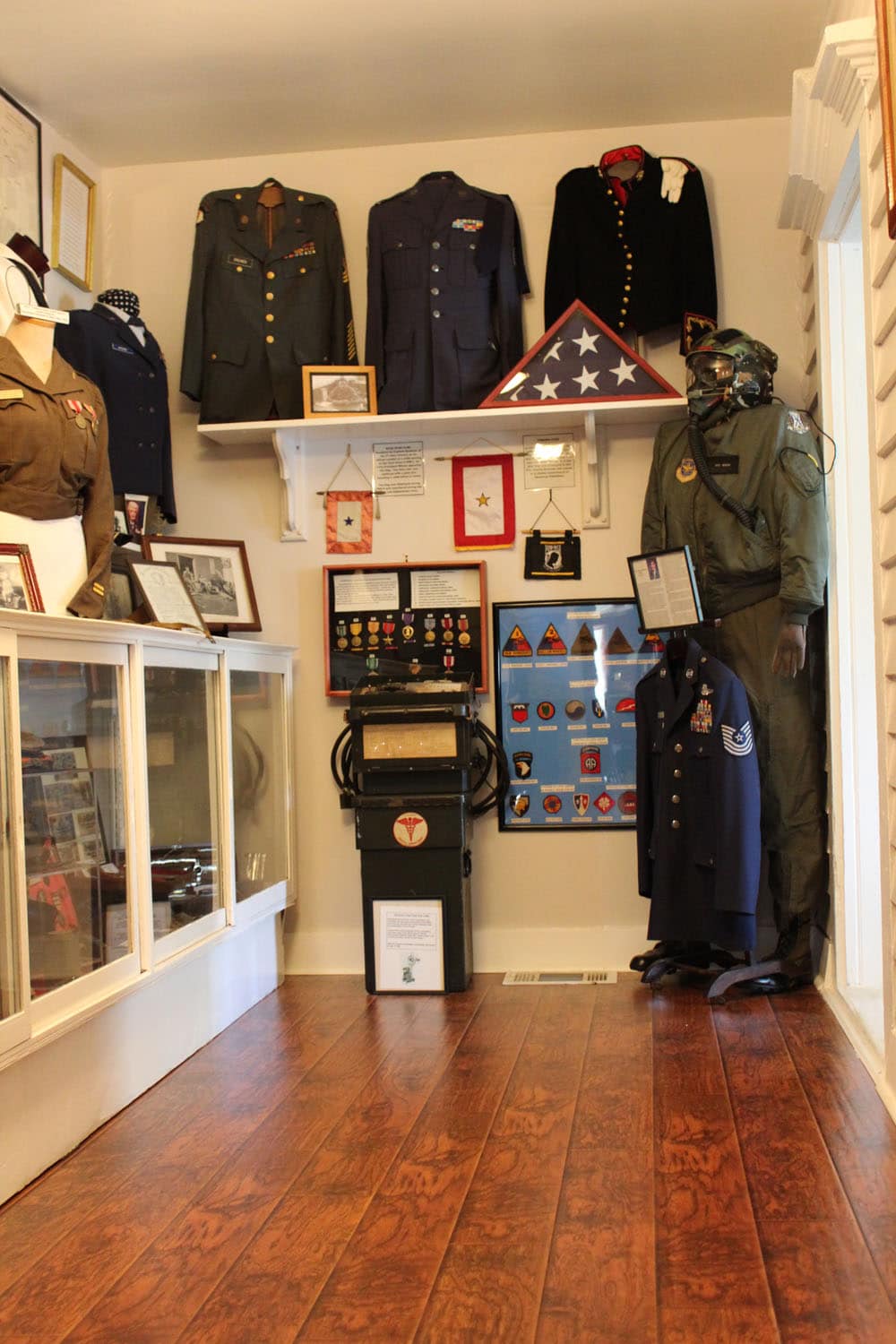
“That’s how we get things done around here. Any little project we can tackle- we do our best.”
The house is coming into a busy event season that runs until February.
“It’s really a plea to the community,” said Wick, “At least come to the events- show your support in that way if you’re not able to make a large contribution. Anything would help at this point.”
Chinsegut received a million dollar grant for their renovations, but May Stringer does not even have a grant writer- which sets them back a whole lot.
Wishfully said Wick, “A grant writer would be fabulous.”
“Truly our day tours, our events- that’s it at this point. The community has been so gracious for decades in helping to preserve this house and to donate their family heirlooms and really preserve the history of Hernando. We’re in a situation now where we need more help than we’ve ever really needed.”
Mark your calendar for the following event that support the restoration of the May-Stringer House.
Night of Lights Tour
Saturday Dec. 8, 2018 6-9PM
May-Stringer House is located at:
601 Museum Ct,
Brooksville, FL 34601
OPEN: Tuesday through Saturday 12:00 pm – 3:00 pm
Adults $5.00
Children, 6 to 12 $2.00
Children under 6, Free
For information call: 352-799-0129

